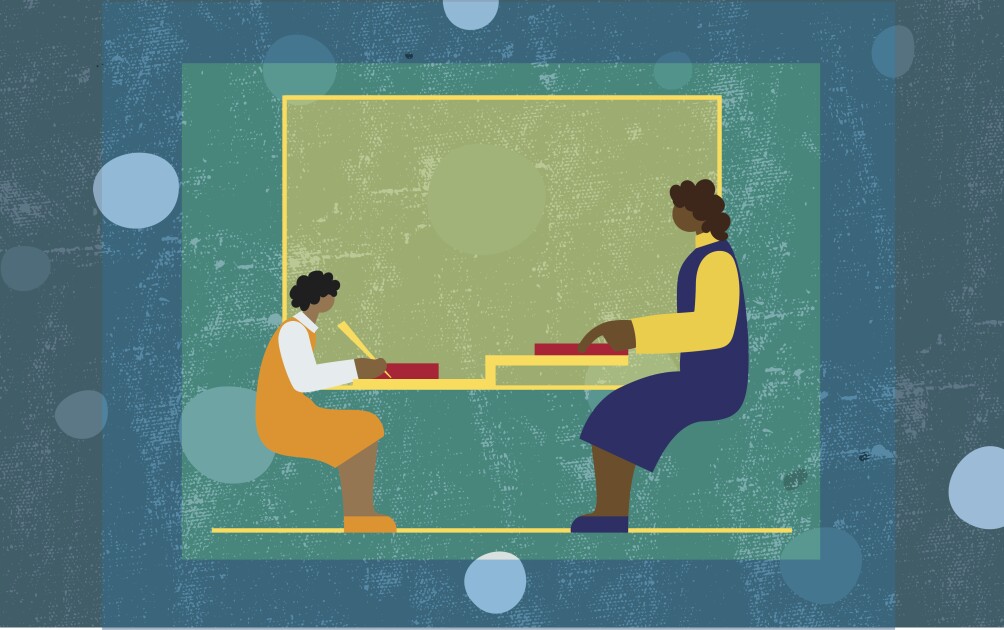
Effective veteran teachers hit the ground running in September and never look back. But ask most of them about their first year or two, and you’ll hear tale after tale of classroom woe. Even some of the most conscientious new teachers--me included--have seen their visions of a classroom in control blurred by the realities of a classroom in chaos.
Sound familiar? If so, take heart, since I’m proof (as are many teachers I’ve coached) that starting the year off on the wrong foot doesn’t mean you’re “toast” until June, as many people believe. But get ready for some serious troubleshooting if you expect to turn things around. No commiserating with colleagues. No pointing fingers at parents, students, or administrators. And no wild guesses as to the sources of your problems.
What we’re talking about here is accepting responsibility for your troubles, and addressing them through data analysis. No, not test scores, but rather data that helps you pinpoint classroom problems. Data that establishes cause-effect relationships between what you are or aren’t doing in your classroom and what students are or aren’t doing. So, what data do you need and how do you get it?
The data you need is a transcript of what actually goes on in your classroom--what you’re doing and what students are doing at any given time. And the best way to get it is with the help of a skillful instructional coach. Someone who can observe your class with a keen eye and help you identify sources of classroom problems and solutions to them.
If, however, you lack the benefit of a coach, you’ll need to take a more do-it-yourself approach. Start by collecting the data in one of two ways using a Classroom Observation Transcript Form:
- Ask a peer to sit in on your class and fill out the form; or
- Have your class videotaped, and fill out the form yourself as you watch the video.
Whether with the aid of a coach, peer, or video, let’s assume you now have the data. Your next step is to analyze it to identify the sources of classroom problems, and brainstorm possible solutions. If, for example, the data reflects students sitting idly or socializing the first five minutes of class, what are you doing during that time? Taking attendance? If so, maybe you need to put it off until students are settled in and self-sufficient. If, however, you’re required to take attendance as soon as the bell rings, you’ll need to revisit your start-up procedures. Some teachers have a warm-up activity on the board for students to start on right away--a good practice--and yet there’s still a lot of commotion or down-time. Is this the case in your classroom, and if so, why? Are the directions unclear? Is the task too difficult for students to handle on their own? Or is it so simple that they’re done before you’ve finished taking attendance?
There are, of course, any number of possible questions and explanations for each situation, but you get the idea: keep troubleshooting until you hit on the particular cause of your particular problem. And now, two examples of how this process helped turn my classroom around:
- I linked student misconduct to me turning around to write on the board. Solution: I stopped using the board and started using a projector, a switch--pun intended--that promptly reduced discipline infractions and increased instructional efficiency.
- I discovered that a common cause of students being off task was me being off task, like when I interrupted class to look for supplies. Solution: I started wearing a tool belt. And with supplies at my fingertips, disruptions dropped and time on task rose. (See Strap on Supplies Rather Than Search for Them.)
I could go on with more examples--and indeed will in future posts--but the point here is that solving a problem is often easy once you know the source of it. Unfortunately, many teachers are susceptible to the flavor of the month (or week or even day) approach where they make change after change targeting symptoms of problems rather than sources of them. Each “solution” thus provides short-lived benefits at best. As a new teacher, for example, I tried anything I could think of to modify students’ behavior, and nothing worked. That’s because the most effective, lasting way to get students to change what they’re doing is for teachers to change what we’re doing.
And it’s the process I’ve laid out here that has helped many teachers including me identify what to change, and how to change it. So if your class is off track, don’t despair. Give this process a shot, and who knows? Maybe you’ll not only replace classroom chaos with control this year, but also hit the ground running next year.
Image by Adrianhillman, provided by Dreamstime license


